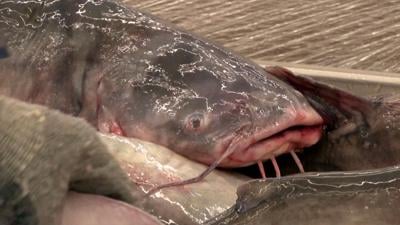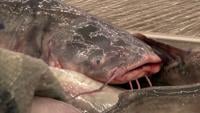TILGHMAN ISLAND, MD - Maryland's two U.S. senators have announced a significant development in the preservation efforts for the Chesapeake Bay. This announcement comes as a part of the recently passed agriculture appropriations bill, unveiling package aimed at supporting catfish processing and saving other species within the bay.
Blue catfish, recognized as a major predator threatening the bay's ecosystem, preying on crabs, rockfish, and oysters, have long been a concern for fisheries. In response, federal funding provisions within the bill will channel resources to Maryland, forming a comprehensive four-part package to address the issue.
"One way to control it is to eat it. And one way to encourage more commercial fishing on catfish is to make it more economically viable," remarked U.S. Senator Ben Cardin.
The allocation of $4.5 million will facilitate the expansion of processing facilities, provide marketing assistance, continuing to pay USDA inspectors, and help DNR and others to fight the catfish.
"This funding brings a lot more opportunities for sustainable growth of the blue catfish industry. Because we're focused on processing, marketing, and ensuring around-the-clock operations," stated Senator Chris Van Hollen.
Nick Hargrove, owner of the Eastern Shore's only USDA-certified blue catfish processing facility, emphasized the importance of stability in the industry. "The goal here is to provide a more stable industry for the fishermen. That way we can handle the capacities when the fish are really coming ashore," Hargrove said.
Hargrove explained his facility processes around 100,000 lbs. of catfish per week and he is looking to expand to a facility in Ridgely, Md.
In addition to funding for processing expansion, efforts to curb the invasive catfish population have also gained momentum. The Department of Natural Resources unveiled a new initiative called the Department of Invasive Species Program, specifically targeting the eradication of blue catfish. Maryland Secretary of Natural Resources, Josh Kurtz, emphasized the program's focus on understanding catfish biology and its ecosystem impact to develop effective management strategies.
"It will allow us to really look at the biology of the catfish, the ecosystem itself, and focus on the actions that we can take at the department and how we can support the ecosystem of others that are doing the work too," Kurtz explained.
The combined efforts signal a significant step forward in securing the ecological balance of the Chesapeake Bay, offering hope for a sustainable future for both its diverse species and the communities reliant on its resources.


